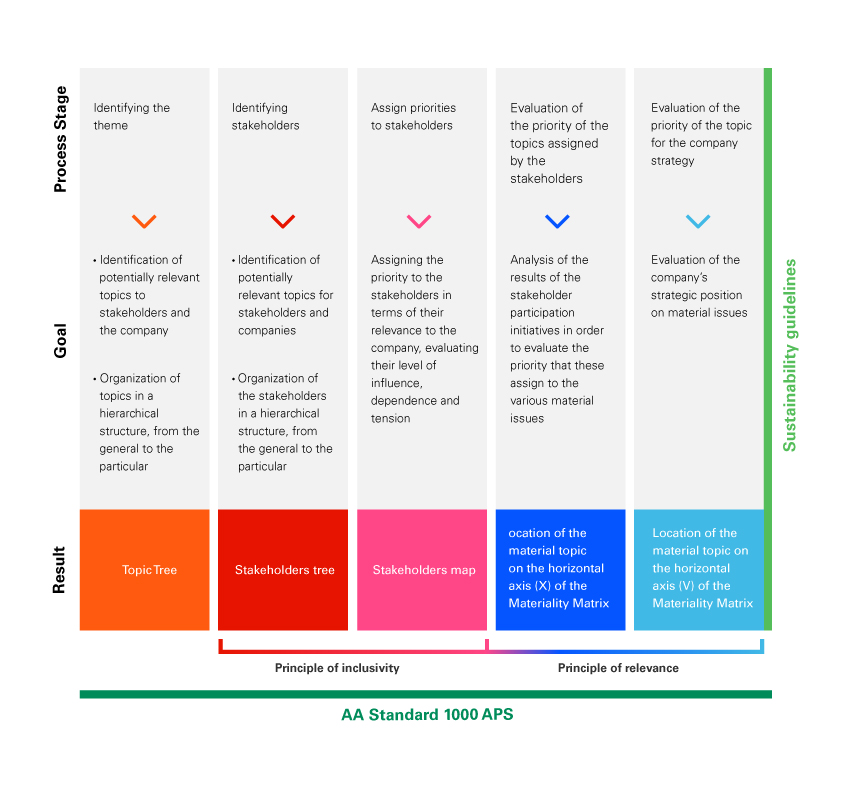Based on the relationship we have achieved with each of these groups, we have been able to find out and define the issues that both for them and for our companies are the most relevant and to which we must give more attention. Thus we can identify that, according to the context in which they are immersed, their needs vary.
Our stakeholders are identified and evaluated according to the relevance they have for our organization. This information is compared with the evaluation of the topics on which we plan to focus our efforts, taking into account the value of the relative priority. An example of this, is the way in which the Enel Group is constantly updating the exercise of materiality (which refers to the relevant issues for stakeholders and for our companies), bearing in mind that it is one of the strategic elements included in the Groups Sustainability Plan.
Below are the main phases that are part of the process with which we identify our stakeholders:
Based on the relationship we have achieved with each of these groups, we have been able to find out and define the issues that both for them and for our companies are the most relevant and to which we must give more attention. Thus we can identify that, according to the context in which they are immersed, their needs vary.
Our stakeholders are identified and evaluated according to the relevance they have for our organization. This information is compared with the evaluation of the topics on which we plan to focus our efforts, taking into account the value of the relative priority. An example of this, is the way in which the Enel Group is constantly updating the exercise of materiality (which refers to the relevant issues for stakeholders and for our companies), bearing in mind that it is one of the strategic elements included in the Groups Sustainability Plan.
Below are the main phases that are part of the process with which we identify our stakeholders:


